Compiled by Dave Waller
Edited by Carol and Lynn Waller
[Special Thanks to Peter E. Randall for Facts and Photos]
Section III
1934:
Jack Hines talks about the beginnings of Playland.
"Well, along that time Jack White of White's Cafe died, and Tom Cogger held the note for it and wanted to help us out. He told me 'It would be a good buy if you could buy it right -- you could use it for something.' So he told the auctioneer that his bank couldn't continue the mortgage -- that this was a cash proposition. He said 'We'll drive those quarter guys out', which we did. And so they knocked it down to us. We rented it for a year to a guy and he couldn't pay the rent. And by 1935 we were in trouble with our mortgage.
And then there was this little Italian fellow who was working in a restaurant on B Street who was very friendly and he said 'You guys are having a problem? I've got an idea. Why don't you take the dining room and clear out all the furniture and board up the kitchen? And I know where you can get a lot of machines on consignment for the first year -- I used to work in an arcade and I know all about it.'
So that's how we got started in the arcade, see? And the next year we had a good summer, and we tore the back out of the kitchen and remodeled the place. We had the encouragement and we went the distance. By the 1940's we had 300 penny machines,"

Mike Mumvis:
"There was a fellow in Harlem named Mike Mumvis who dealt in arcade equipment. We got acquainted with him, and he helped us out we bought a lot of stuff from him. Our favorite machine was a German-built wax Grandma who's hands moved over cards and spit out a fortune. It was one of only four made -- there's another one in Disneyland."
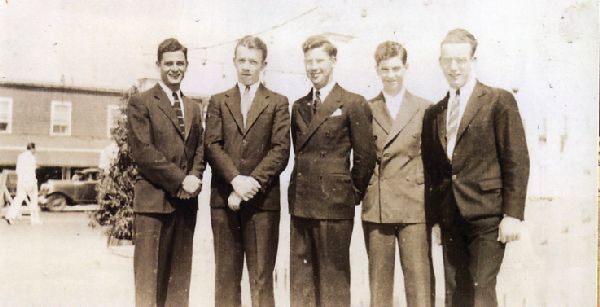
Fine young men:
"Do you know what I owe my success to? The ability to pick the right man for the job." Jack Hines ran a tight ship, but a fringe benefit was free housing for the summer -- the second floor had been converted into a dormitory. Many a dentist and many a priest worked his way through college at Playland.
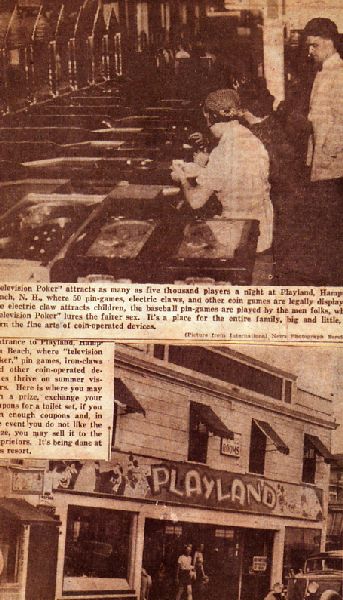
Ah Boys, Ah Girls:
Arcade! Five thousand players a night seems an impossible number, but with only one other arcade on the beach, Playland was booming by 1939. Note the exterior hasn't changed much from the 'White's Cafe' days, but you can bet Walsh & Hines had fine tuned the place into a profitable business. Even during World War II, crowds streamed in to forget their troubles.
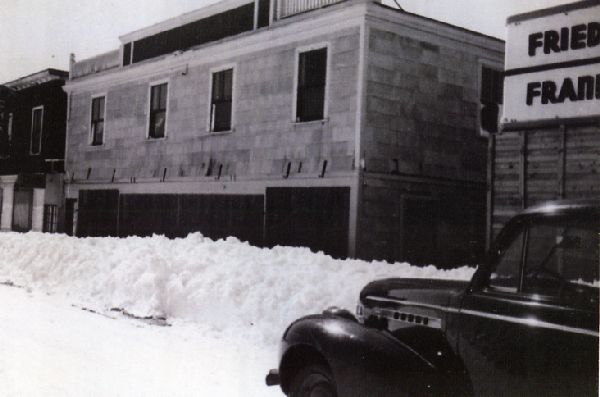
Playland Winter:
The Jacks boarded up Playland in the fall to protect it from the winter weather. Every so often they'd make the trip up from Lynn, Massachusetts where they ran the Flying Yankee Diner. By the time this photo was taken in 1939, the men had bought an adjoining lot and leased it out to Howard Johnson, who operated a fleet of Ice Cream and Fried Clam shops.
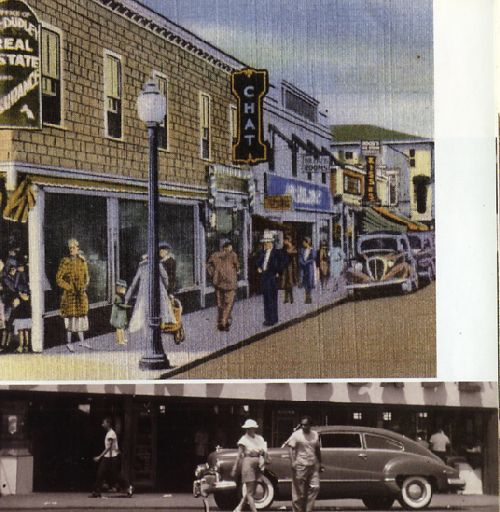
Color View mid 30's:
Photo at the top: Throngs flocked to the beach, and the cast of characters grew with names like Bill Elliot - 'The Singing Cop', Two Gun Stickney, Waking Mike Doyle, and Big Top Jack O'Connell. During WW2 with worries of Nazi sub attacks; all lights were blacked out -- no light was visible from offshore.
Busy late 40's:
Bottom photo: To thwart the Germans, the enterprising men of Playland used their alley to make a side entrance, and operated with the big garage doors rolled down. Even with Nazis prowling, everybody tried to conduct business as usual.

Jack Walsh, ca. 1940s:
The Two Jacks were boyhood friends and their different personalities played important parts in their business career. Walsh was the big idea man -- always thinking of innovations and keeping up on the latest trends. Hines had the people skills -- he made the operation hum by keeping employees and customers loyal.
Bennie Lake
Every first-rate arcade needs a first-rate mechanic. Kids punished the equipment at Playland, and the the machines required constant maintenance. The Jacks had the good fortune to have mild mannered Bennie Lake as their man, and his silver wrenches kept the operation humming. He and the Arcade Boys used a little device called a "Fish" if a customer lost a coin in a machine. It was a dime with a small hole drilled in the edge and a wire protruding from the hole. You could dip the Fish into the coin slot and give the customer a free game. If a piece of equipment really broke down and one of the boys put a paper "out of service" sign on it, Bennie would go into action. He hated to see anything out of order, and used a specially built lifting device that could slide under a pin game and raise it onto casters. Away it would wheel to his shop for servicing. Bennie and the rest of the boys patrolled the arcade as best they could, but the junior customers outnumbered them. He wintered in Providence, but in summers the Jacks built a special apartment in the back just for him. Bennie stayed with Walsh & Hines right to the end, and would frequent Playland as a visitor for years after that.
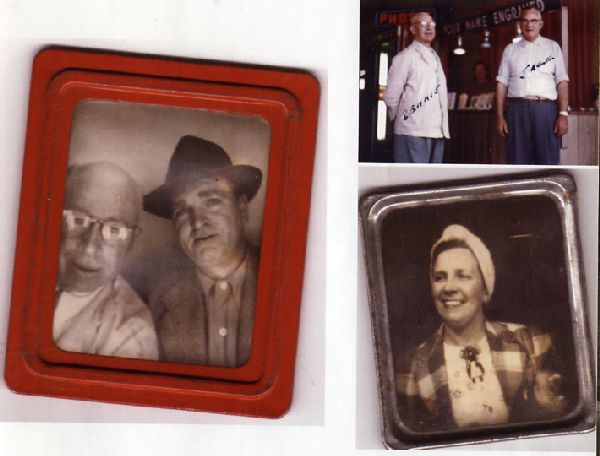
Bennie & Al Hines:
The Photobooths were popular, and placed out front to get the best exposure. The pictures came in a little metal frame. There's Jack's brother Al.
As profitable as they were, the Photobooths required more maintenance than any other machine, plus a daily supply of chemicals & paper.
Mary Hines:
Al's wife Mary logged more than a few hours at Playland, especially at the Pokerino Tables. She'd bring her mother-in-law until 10 pm.

At night 1940s:
After the war, the building was entirely expanded and modernized. A backlit neon sign spanned the entire facade. Many of the machines in this photo were already antiques, with a number of 40 year old penny mutoscopes, strength testers, and the famous Grandma Fortune Teller. Jack W. and Bennie Lake pose.
